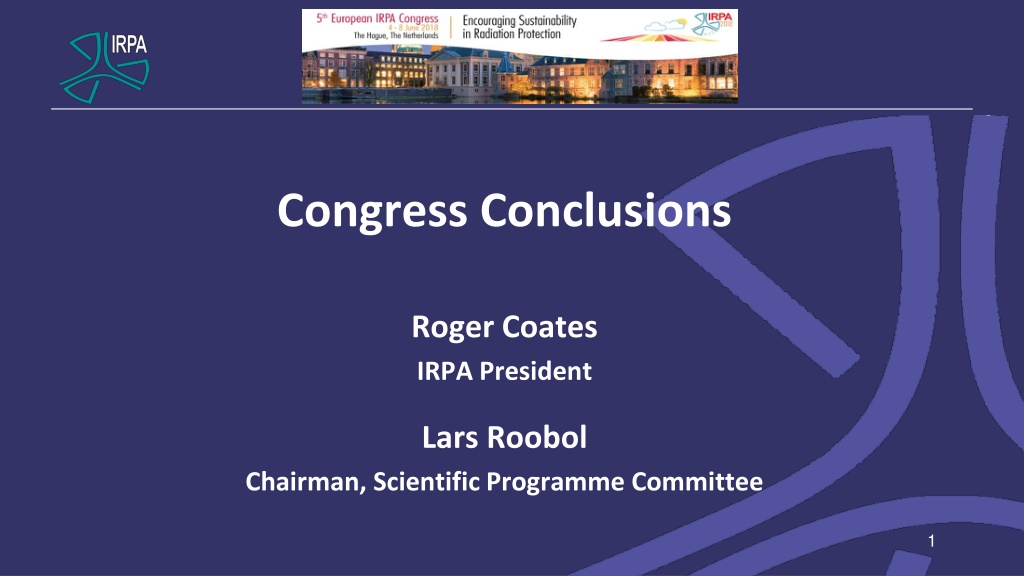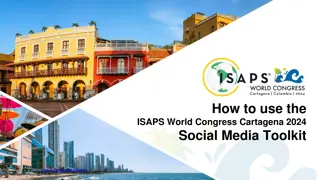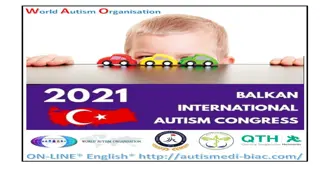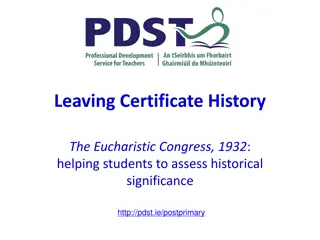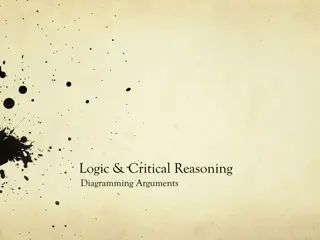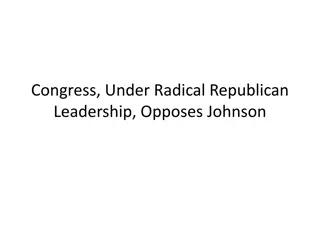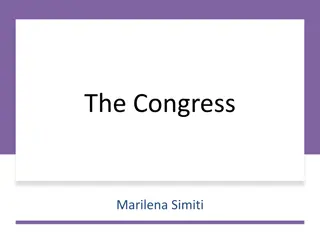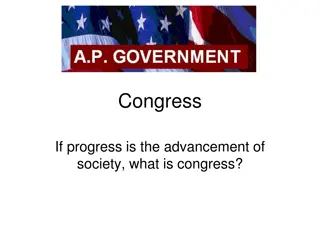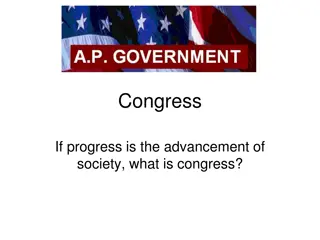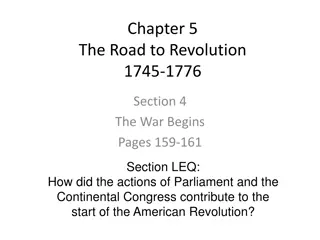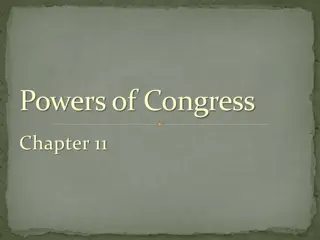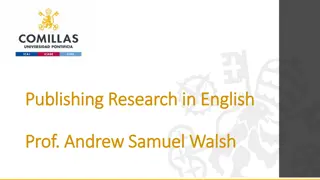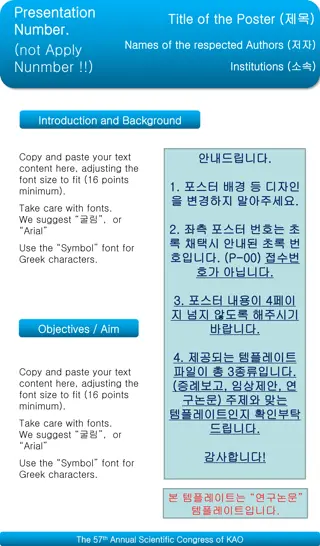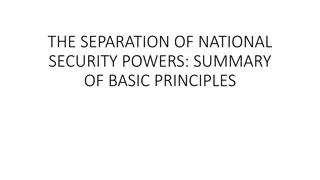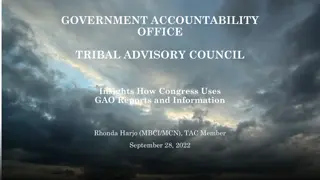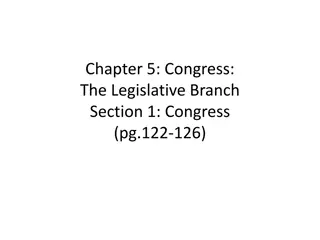Congress Conclusions
the key outcomes and discussions from the recent congress on radiation protection, covering topics such as ethics, legislation harmonization, medical advancements, and more. Gain a snapshot of current challenges and proposed solutions in the field.
Download Presentation

Please find below an Image/Link to download the presentation.
The content on the website is provided AS IS for your information and personal use only. It may not be sold, licensed, or shared on other websites without obtaining consent from the author.If you encounter any issues during the download, it is possible that the publisher has removed the file from their server.
You are allowed to download the files provided on this website for personal or commercial use, subject to the condition that they are used lawfully. All files are the property of their respective owners.
The content on the website is provided AS IS for your information and personal use only. It may not be sold, licensed, or shared on other websites without obtaining consent from the author.
E N D
Presentation Transcript
Congress Conclusions Roger Coates IRPA President Lars Roobol Chairman, Scientific Programme Committee 1
Why Congress Conclusions? To share the key outcomes with those professionals not able to attend To provide a picture of key issues in the current state of the science and practice of radiation protection as an input to the ongoing development of the system of protection and its implementation 2
A report of the Congress Conclusions will be compiled and made available through the congress proceedings, and will be published on the IRPA website This presentation addresses selected highlights - with apologies! 3
System of Protection and Sustainability Ethics (Lochard): 4 core values, 3 procedural values, choosing wisely the best action through practical wisdom System challenges (Huyskens): Anxiety for health risks from low dose exposures Confusion about dose quantities & units Anxiety for internal exposure from radioactivity Confusion about dose limit for exposure of public. Can we agree a common approach to banding radiation & risk? Alignment with UN sustainability goals (Orrell) the challenge of waste management timescales 4
Legislation & Regulation Harmonisation: current focus on implementation of the BSS Review of the very wide EC programme Many, many papers on all aspects of implementation Note the issue of wider harmonisation beyond Europe: eg IAEA BSS Current challenges: Food and water standards Radon NORM Good example of industry self-regulation: NDT Code of Practice in the Netherlands 5
Medical Very high profile many papers WHO a public health perspective (but of course wider than medical ) Bonn Call for Action Radiation safety culture in healthcare (with IRPA/IOMP/IAEA) Proton therapy is getting bigger lots of optimisation, targeting and development Is the RBE higher than ICRU s 1.1? Monitoring for health effects in cancer survivors Very very clever CT approaches, and more emphasis on QA 6
Occupational Challenges continue in implementing eye dose limitations Monitoring is becoming available Ideas for protection increasing But continue to share experiences in this new(ish) challenge Dosimetry generally Intercomparisons: eg of commercial products New approaches: even NaCl salt! Specialist uses: eg wound monitoring 7
Decommissioning A huge growth area: need more emphasis on sharing experiences, and a series of networks now exist The importance of the end state : how much activity can reasonably be left in-situ? Development of better measuring techniques but prior calculation of expected activities can greatly assist The challenge of the new clearance levels the practicalities are very daunting, and the outcome could be very expensive! 8
Industries involving NORM New ICRP recommendations approaching: flexible approach, importance of aligning with other safety management approaches, with pragmatic consideration of Reference Levels. But is it existing or planned potential future discussions with the current regulatory approach A challenge from industry: are we doing too much regulation, are we regulating the right things, and are we getting value for society? Note that European regulations are often used in the wider world Developing and improving the NORM database 9
Radon All European countries are updating regulations and making radon action plans and/or doing surveys. Many countries need the highest reference level of 300 Bq/m3. Much work is done on building materials and their relation to radon and thoron levels in buildings. In principle, the EU BSS do allow for a large increase in radon/thoron dose in homes, because of the new regulations for building materials. Radon survey approaches Remediation approaches, including dealing with the daughters! 10
Emergency Management Still lots of reflection and learning from Chernobyl and Fukushima Still many gaps and challenges at a European level Decision aiding systems How to optimise protection in emergency and recovery phases especially noting uncertainties Monitoring strategies and citizens monitoring Cross- border information and alignment Lessons for communication Iodine remains a key issue: blocking recommendations, monitoring strategies etc The challenges of minor events I131, Ru106 events 11
Underpinning Science Epidemiology of worker cohorts of Mayak and Sellafield an important grouping The importance of understanding stem cells 12
Education and Training Euterp workshop: training the worker, measuring training effectiveness Regulatory requirements in the BSS: re-adjusting national arrangements (especially RPE/RPO) Learning outcomes are now formulated in terms of knowledge, skills, and competences, as demanded by the European Quality Frame. The distinction between RPO's and RPE's is making changes in the education systems in several European member states. Transferability of roles across Europe. Mutual recognition of competence??There is already much overlap in the curriculum of EU member states. Someone moving from one state to another, often only needs to learn the national legislation. 13
Non Ionising Radiation (Not interesting??) ICNIRP review: guidelines, statements, factsheets But not considering risk management or precaution: taking Values into account is a job for others! ICNIRP (with help from other intl orgs) is developing NIR Protection Principles. There is strong interest in moving towards a common framework/approach for NIR and IR WATCH THIS SPACE UV risks are highlighted WHO guidance The Sievert Equivalent : 3.4 mSv/y population average?! Switzerland is at risk!!! 14
Communication and Public Understanding A key area, and a key conclusion at every conference So we really must do it but its not easy! Social science models of risk communication can really help: Reception=> Acceptance=> Behaviour change Importance of the Risk Governance approach work out how to do things together A key message to all RP professionals: ITS YOUR JOB you can t leave it to someone else 15
Schools programme We know we have to talk to our young people about radiation NVS programme on Wednesday 150 14-15 year old children Mixture of talks and hands on demonstrations With some big toys military monitoring vehicles etc Look at the faces of the children it tells you how they are feeling about it Look at the faces of the presenters and demonstrators it tells you how rewarding it is! 16
Young persons and the Future of our Profession The challenges were reflected in many papers Reviewing skills gaps Recruitment and retention ideas Mentoring programmes Providing clear, interesting and challenging career paths Knowledge Management programmes Links back to getting in early at schools, colleges and universities Our young people are best placed to do this Of course it is widespread, across all sectors 17
Young Scientists and Professionals Prize Competition A standard part of all IRPA s congresses 11 entries from our RP societies Belgium, Spain, Russia, Netherlands, Italy, Germany, Austria, Finland, UK, France, Czech Rep 8 medical sector, one each from radiobiology, NORM monitoring & radon 9 females, 2 males Extremely high standard of both work itself and the presentations We await the winner! 18
IRPA Young Generation Network Many RP societies now have Young Clubs We can now link these together to share experiences and develop their own wider network Open to all YPs you don t have to have a Young Club to join YGN Mission: To encourage, inspire and develop the next generation Leadership Group now established: Austria, France, UK, Italy, Spain, Netherlands Japan, Korea, Argentina This is our future either join, or assist! 19
Personal comment New approach to Refresher Courses has been invigorating: No extra charge Much higher attendance Very substantive presentations at both basic and advanced levels Very well appreciated by all! Also Poster Pitches very well received 20
Congress Conclusions Its easy just say it was good! 21
